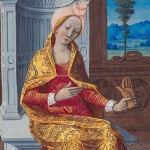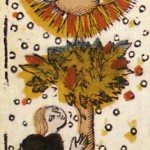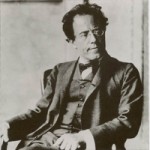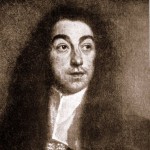
Welcome to the 88th History Carnival. I decided to post a day ahead of schedule in case anyone was spending their Memorial Day or Bank Holiday weekend in front of a screen.
What a pleasure to look through all the excellent work being done in the history blogoshpere. The selections represented here are of course only a sliver of what’s out there, but I tried, with a couple of obvious exceptions, to stay in the vicinity of the 17th Century, Magnificat’s playground. I also wanted to send some love to those who are doing good work in music history and getting it out into cyberspace.
I tried out a different layout that would allow me to have thumbnails for each of these excellent articles. Click on the titles below and enjoy!
All the music that I mention in the blurbs is collected on a Playlist here.

In a post at Mercurius Politicus, Nick Poyntz contemplates the curious children’s rhyme on ‘permanent loop’ at his house at the moment:
The pelican’s beak holds more than its belly can,
Nothing has a beak that’s the size of the pelican’s.
and considered some historical interpretations and extrapolations and their visual representation in various media.
In a similarly ornithological vein, Nick followed up with Brother Fountain and Brother Heron, pondering how this is a reference to Cromwell and Sir Henry Vane.

Atrium Musicologicum posted Giuliana Gialdroni’s overview of the Renaissance Italian master, Giovanni Pierluigi da Palestrina’s second publication: his first set of madrigals for four voices. The music of Palestrina enjoys a unique historical distinction in Western music as the oldest continuously performed repertoire. Unlike all music before and most since, Palestrina never left the ‘playlist,’ already recognized as ‘classical’, or canonical by the 17th Century. It was the first music to be performed with anything like the contemporary notion of ‘early music’ and provided the point of reference for compositions designated by composers as in the ‘stile antico’ throughout the 17th and 18th centuries, with echoes in the Romantic era.
There are few recordings of Palestrina’s madrigals, as his reputation was and is primarily grounded in his motets and Masses. Rinaldo Alessandrini’s Concerto Italiano has a beautiful recording that I couldn’t find readily available online. Here’s a lovely youtube of the master’s exquisite eight voice Stabat mater performed (I think) by the Tallis Scholars.

As usual there were several visually compelling posts from ‘peacay’ at BibliOdyssey. I was particularly drawn to his commentary on The Sybelline Prophecies, associated for those of who focus on ‘early music,’ with the obscure and sublime Prophetiæ Sybillarum of Orlando di Lasso (or Roland de Lassus if you prefer.) There’s a lovely series of youtube videos mixing the Ensemble Daedalus recording with images from Cranach – here’s a link to Sybilla Lybica.
Peacay posts a striking gallery of images from “the parchment manuscript, ‘Sibylla Prophetae et de Cristo Salvatore vaticinantes’, was produced in Tours in the 1490s. The current evidence suggests that Jean Poyer (or Poyet) was responsible for the elegant series of twenty five miniatures that feature generous shell gold illumination. In addition to the Sibyl framework, the manuscript draws iconographic inspiration from the Hours of Louis de Laval (1475) and devotional influence from the Medieval classic, ‘Speculum Humanæ Salvationis’.”
Also at BibliOdyssey, see Festa della Porchetta.

Last Fall, Mark Samples and Zack Wallmark set themselves a challenge: digest Richard Taruskin’s Oxford History of Western Music over the course of an academic year – and to comment on it throughout the experience. As they point out in their ‘mission statement:’ Literature lovers have Proust’s 7-volume In Search of Lost Time; thespians have the 8-hour Faust by Goethe (and Japanese thespians have even longer Noh plays); opera fans love to get lost in “The Ring” cycle; and for humble musicologists, we have OHWM…the stunning life’s work of one of the greatest minds in the discipline, the product of over ten year’s labor.”
Well, they’ve made it to the Enlightenment and on to the 19th Century. Often Taruskin Challenge will juxtapose historical musics as Zach does in the linked article: the depiction of Chaos in Haydn’s Creation and Wayne Shorter’s “Chaos,” from his album The All Seeing Eye. Here are the two links embedded in their post.
Haydn
Shorter

Lucy Inglis at the always brilliant Georgian London examined the fascinating ‘Cries’ of the street traders of London. As she notes, each of the merchants “had their distinctive cries, to which they gave their own voice and often, a special twist.” I found this one especially interesting:
Rare ripe strawberries and
Hautboys pence a pottle.
Full to the bottom, hautboys.
Lucy notes that ‘hautboy’ referred to ‘a small, wild strawberry’. I’m curious about this use of the French word for oboe, an instrument introduced to England, along with French opera, in the last quarter of the 17th century. It continued to be called “hautbois’ and various Franglicizations throughout the 18th century.
My first encounter with the ‘Cries’ was refracted through Luciano Berio’s idiosyncratic setting.

Yannis Deliyannis at Chronicon Mirabilium posted about the nautical display staged on the Arno in Florence in 1608 as part of the three-week long celebration of the marriage of Cosimo II de Medici and Maria Magdalena of Austria.
Yannis surveys several depictions that survive including “a booklet by Camillo Rinuccini entitled Descrizione delle feste fatte nelle reali nozze de Serenissimi Principi di Toscana D. Cosimo de Medici e Maria Maddalena Arciduchessa d’Austria (Florence, 1608.)”
Much of the music performed at the wedding festivities was composed by the virtuoso singer Giulio Caccini. Here’s an exceptional recording of Caccini’s Amor, io parto by Monteserrat Figueras and Hopkinson Smith.

Roy Booth at Early Modern Whale examines“The yellovv book, or, A serious letter sent by a private Christian to the Lady Consideration, the first day of May, 1656 which she is desired to communicate in Hide-Park to the gallants of the times a little after sun-set : also, a brief account of the names of some vain persons that intend to be there, whose company the new ladies are desired to forbear”, a pamphlet published by the puritan W.B. in 1656, that commanded three reprints and a sequel (“A new trial of the ladies. Hide-Park, May-Day. Or, The yellow books partner”).
Roy notes that “like many religious moralists, W.B. is redeemed from dullness by the fascinated attention he pays to what he so much disapproves of”. Indeed.

The good people at Mistris Parliament discuss the various decrees and statutes issued by the crown and parliament to regulate printing in the 17th century, specifically in relation to the Stationers Company, a sort of trade union for the printing business.

The Dainty Ballerina offers a perriwigmaker’s advertisement for a most curious product:
“THE Rich Balsamum Apoplecticum which is made in Florence and some other parts of Italy; by anointing the Temples, Nostrils and the Roof of the Mouth it hath recovered many out of an Apoplexy to admiration.
By anointing the Temples and Nostrils it gives present Ease to the violent Pains in the Head: likewise very effectual against all Swimming and Dizziness of the Head; and very rare in suppressing all Vapours and Fumes from the Head occasioned by hard Drinking.”

Bernard Gordillo posted on the ever-fascinating topic of castrati – in this case the attitudes of music historian Charles Burney, who visited Naples in October of 1770, “where he sought to understand how the city’s music conservatories were run and its young musicians trained. He was especially interested in the well-known practice of castrating boys in order to preserve their high singing voices (Naples was infamous as the center that produced the aptly-titled castrati).”
The practice of castrating boys as essentially an irreversible career speculation (only a small percentage of castrati also possessed the talent and good fortune to have successful careers as musicians) was eventually banned, but one castrato, Alessandro Moreschi, survived into the 20th Century and left a series of astonishing, sometimes disturbing recordings. (For example) In fairness, he was well past his prime and the recording technology available in 1904 makes it impossible to know what Moreschi may have sounded like at the peak of his career.

Well, this one is of course way out of Magnificat’s century, but the issues that it raises are essential to the entire exercise of ‘historical performance practice.’ In 1905, “a German company called Welte Mignon invented a new process for recording sound on piano rolls, that was much better anything else at the time. To publicize their new system, they got famous composers to play their own music.” And to our great benefit one of those composers was Gustav Mahler, who recorded four tracks including transcriptions of two movements from his symphonies. The impact of recording on musical performance and perception has been incalculable and in may ways has made historical music even more distant, precisely because it provides the false impression of proximity, of actuality.
Doundou Tchil at Musical Iconoclast provides some background to the circumstances surrounding the recording sessions and links to two of the tracks, including a performance of the first movement of the 5th Symphony in piano transciption. The article also touches on the importance of such piano transcriptions in the time before recording, highlighting more of Edison’s collateral damage – the dramatic decline in active music-making in the home.

BFXTen posted these notes by Stanford University Professor Emeritus George Houle. The essay sketches the lives of several of the most important Enlgish musicians of the 17th century represented on the program–William Lawes, Christopher Simpson, John Jenkins, Matthew Locke and the Italian expatriate Nicola Matteis.
There was (and still is) an identifiably ‘English’ harmonic language that can be found as far back as Dunstaple in the 15th Century and the distinctive ‘insular’ sound is perhaps most pronounced just before the triumph of Corelli upon the arrival of his Op. 1 in the 1670s. Professor Houle touches on the issues of deliciously diverse approaches to the vertical organization of music in the century before the more international ‘modern’ concept of tonality was theorized.
Here’s a recording of Il Giardino Armonico performing a Partita by Matthew Locke’s c minor.
(Full disclosure: Magnificat is performing at two concerts on the festival and I had the privilege of working with Prof. Houle at Stanford.)

OK, not even close to the 17th Century, but Judith Weingarten at Zenobia:Empress of the East posted a fascinating piece about the ancient city of Antioch, which “vied with Alexandria to be the most magnificent city of Empire after Rome itself”.
In the previous month, Judith posted an excellent series of articles about another Judith, the “Uppity Dutch Master” Judith Leyster.

Westminster Wisdom posted a more in an ongoing series of essays that consider different aspects of St. Augustine’s, each thought-provoking. For example, in the post from May 3 linked here. After distinguishing two apparently incompatible understandings of ‘miracle, the question is posed of whether ” whether these two understandings of miracle (miracle as the marvellous and strange event versus miracle as the breaking of a natural law) have coexisted, how they have evolved and changed.”
See also Augustine’s Pagan Gods and Augustine, the Classicist.

Technically, this was posted at the end of April, but the History Carnival is a day early, so why not? The Renaissance Mathematicus posted about the Scots physician and polymath John Arbuthnot (1667 – 1735). A good friend of Isaac Newton, Arbuthnot “served in the Royal Society commission to kidnap John Flamsteed’s Star Catalogue and it was in fact Arbuthnot who carried out the dirty deed, traveling to Greenwich to collect the manuscript.”
I was particularly interest to learn that he was responsible for the creation of the archtypal englishman John Bull. Along with he was a member of the Scriblerus Club, a sort of satirical Academy founded in 1712 and boasted such luminaries as included Jonathan Swift, Alexander Pope, John Gay, John Arbuthnot, Henry St. John and Thomas Parnell.















